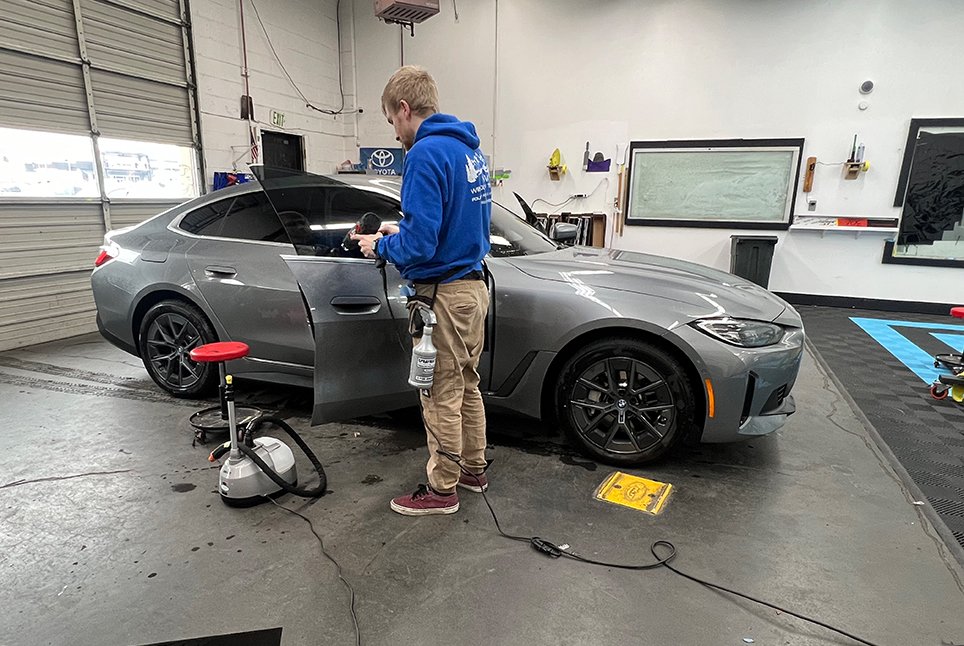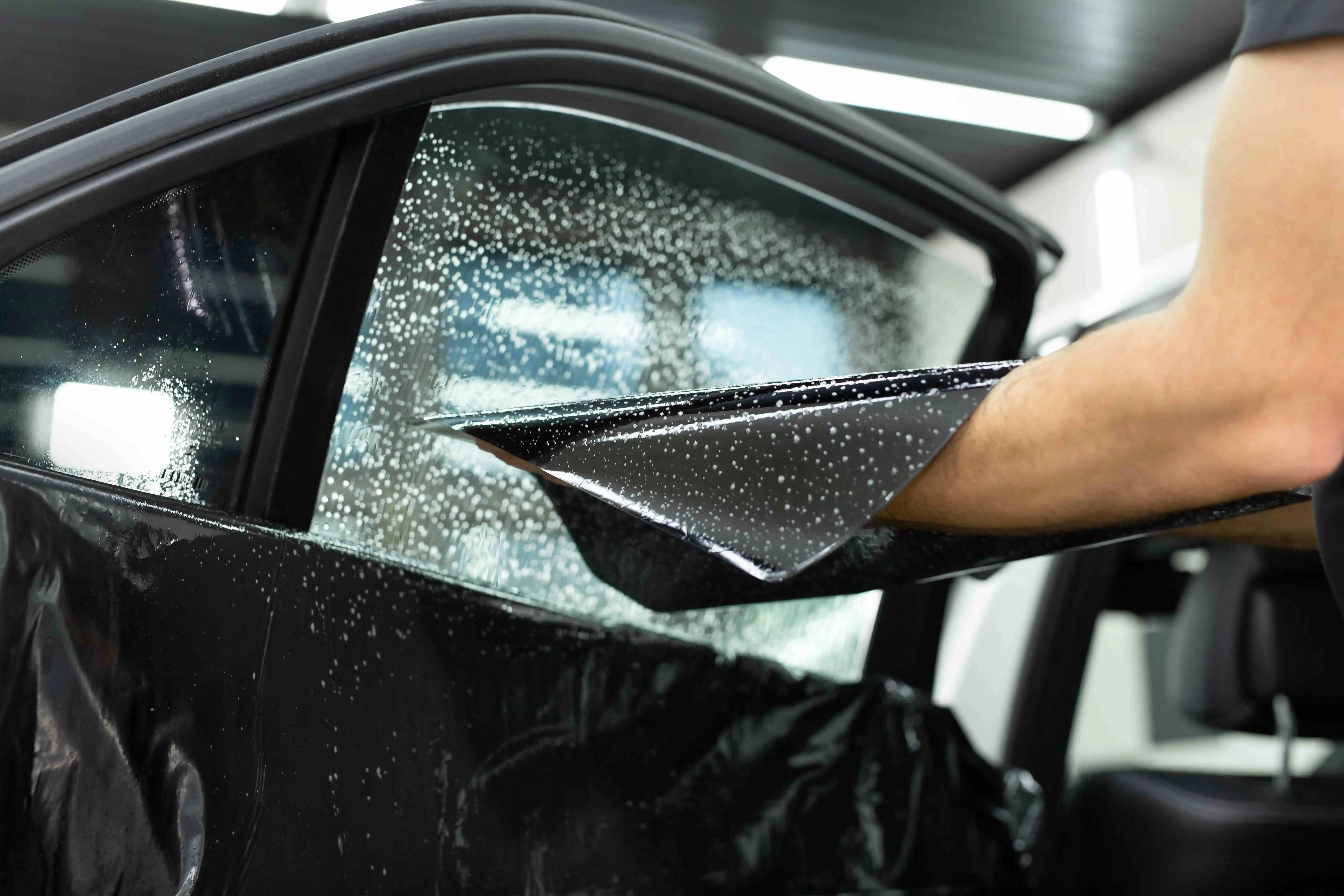Exactly How Vehicle Window Tinting Maintains Your Vehicle Cool in Hot Weather
Exactly How Vehicle Window Tinting Maintains Your Vehicle Cool in Hot Weather
Blog Article
Window Tinting Rules and Guidelines: What You Need to Know Prior To Tinting Your Vehicle
Before continuing with window tinting for your vehicle, it is crucial to familiarize on your own with the varied regulations and standards that regulate this technique throughout various states. These laws determine the permitted degrees of tint darkness, commonly gauged by visible light transmission (VLT) portions, and consist of certain specifications for front windshields intended at making sure road safety.
Overview of Home Window Tinting Regulations
Home window tinting legislations are frequently subject to variation across different territories, mirroring local policies and security considerations. These legislations dictate the permitted degrees of tint darkness and reflectiveness on lorry home windows, guaranteeing that vehicle drivers keep ample presence while additionally shielding against damaging UV rays and warm.
Many regulations categorize home window tinting based on the Visible Light Transmission (VLT) portion, which indicates the amount of light that can travel through the window. Usually, lower VLT portions indicate darker tints. Laws typically set apart in between the front, side, and back windows, with more stringent limitations put on the front windscreen to boost security for both the vehicle driver and other road customers.
Conformity with window tinting regulations is essential, as violations can result in penalties, necessary elimination of the color, and potential increases in insurance costs. It is vital for automobile proprietors to familiarize themselves with neighborhood regulations before continuing with window tinting setups.
State-by-State Tint Regulations
Understanding the certain home window tinting guidelines in each state is important for lorry owners looking for to adhere to the regulation. Each state in the U.S. has actually established its very own collection of rules regulating home window tinting, which can vary substantially. These regulations usually dictate the allowable degrees of color darkness, the sorts of windows that can be tinted, and any kind of clinical exceptions that might use.
As an example, states like The golden state have strict constraints on color darkness for front windows, while others, such as New Mexico, may permit darker tints. In addition, particular states mandate details exposure percents for various home windows, including the windshield, front side windows, and back home windows. It is important for car proprietors to familiarize themselves with their state's laws to stay clear of possible fines or fines.
In addition, some states might call for a qualification sticker label to be put on colored windows, suggesting compliance with state regulations. Failure to stick to these regulations not just risks lawful effects however can also influence security and visibility while driving. Car proprietors must perform complete research study or consult neighborhood authorities to make certain full understanding and conformity with state-by-state tint policies.
Allowed Color Degrees and Kinds
Many vehicle proprietors may be amazed to discover that permitted color degrees and types vary widely across various states. Each state has developed its own regulations relating to the permitted darkness and reflectivity of window color, typically determined by Visible Light Transmission (VLT) portions. VLT describes the amount of light that can pass through the colored home windows; hence, a reduced percent suggests a darker tint.

In addition, the kinds of tint products permitted can differ, with some states restricting metal or mirror-like surfaces. It is necessary for automobile proprietors to acquaint themselves with their state's specific legislations to guarantee compliance. Non-compliance can lead to penalties, mandatory elimination of the color, or various other legal repercussions, making it necessary to understand these guidelines prior to continuing with installation.
Medical Exemptions for Tinting
While not all states provide allocations for medical exceptions pertaining to window tinting, those that do recognize the need for certain individuals to boost visibility and convenience due to clinical problems. Different medical conditions, such as lupus, skin cancer cells, and particular eye conditions, can make individuals especially conscious sunlight. As a result, these individuals might need darker tints to shield themselves from harmful UV rays and glare.

It is important to keep in mind that despite having a clinical exception, there browse around these guys may still be limitations on the level of color enabled. Compliance with state laws ensures that individuals are both protected and within lawful restrictions. Those considering clinical exceptions must contact their local Division of Motor Cars or equivalent authority to understand the needs and procedures required to look for an exception efficiently.
Charges for Non-Compliance
Falling short to conform with window tinting laws can result in considerable fines, which vary by state. Police are encouraged to provide citations for cars that do not adhere to the defined tinting guidelines. These charges commonly include penalties, which can range from small total up to numerous hundred dollars, depending on the seriousness of the offense and the state in inquiry.
In some jurisdictions, duplicated offenses may cause escalating penalties or extra charges, such as required court looks. Additionally, non-compliance may necessitate the elimination of prohibited tinting, frequently at the proprietor's expense. In extreme instances, regular transgressors may encounter suspension of their vehicle Window Tinting registration until compliance is achieved.
Furthermore, insurance effects may develop from obtaining numerous citations for window tint infractions. Insurance companies might watch such violations as a sign of riskier behavior, potentially bring about boosted costs or trouble in protection.
To avoid these charges, it is critical for vehicle proprietors to acquaint themselves with their regional home window tinting legislations and guarantee that their lorry complies (Window Tinting). This positive method not just prevents legal implications however also advertises roadway safety and security
Conclusion

Many regulations categorize home window tinting based on the Visible Light Transmission (VLT) percentage, which indicates the amount of light that can pass with the home window. Conformity with window tinting guidelines is vital, as offenses can result in penalties, required removal of the tint, and prospective boosts in insurance premiums.Understanding the details window tinting policies in each state is essential for car owners seeking to comply with the legislation. These policies often determine the permitted levels of tint darkness, the types of windows that can be tinted, and any medical exemptions that might use.
For instance, states like The golden state have rigid constraints on color darkness for front home windows, while others, such as New Mexico, might enable darker tints.
Report this page